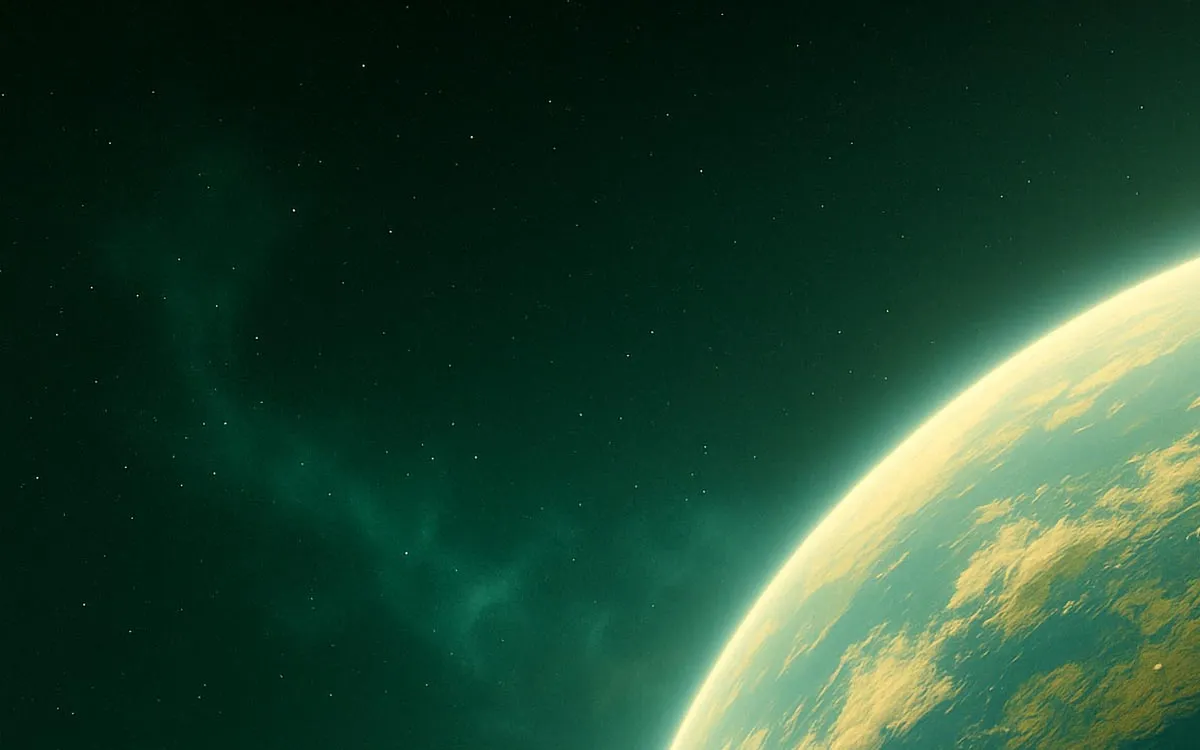
Astronomers may have uncovered the most compelling evidence of extraterrestrial life to date, thanks to groundbreaking observations from the James Webb Space Telescope (JWST). The research, led by a team from the University of Cambridge, has identified sulfur-based molecules in the atmosphere of the exoplanet K2-18b. These molecules, known as dimethyl sulfide (DMS) and/or dimethyl disulfide (DMDS), are typically produced only by living organisms on Earth. While the evidence remains preliminary, its alignment with predictions for a “Hycean” world—potentially covered in oceans and capable of supporting microbial life—opens exciting new avenues in our search for life beyond our planet.
The discovery of these possible biosignatures has ignited enthusiasm among scientists, although they are approaching the findings with caution. K2-18b orbits within the habitable zone of its host star, a region where conditions may allow for the presence of liquid water. The detection of DMS and DMDS is particularly significant, as both substances are associated with biological processes on Earth, primarily produced by marine phytoplankton.
The statistical confidence in the detected signals has reached a “three-sigma” level, indicating a mere 0.3% chance that the findings are coincidental. However, a scientific discovery requires a “five-sigma” significance to be deemed confirmed, representing less than a 0.00006% probability of random variation. Therefore, while the findings are promising, further observational data is essential.
The research team has suggested that an additional 16 to 24 hours of observation time with the JWST could help achieve the necessary five-sigma significance. Their findings have been documented in The Astrophysical Journal Letters. Previous studies of K2-18b had already detected methane and carbon dioxide in its atmosphere, marking the first instance of carbon-based molecules being found in a habitable zone exoplanet’s atmosphere. These observations align with the characteristics of a 'Hycean' world, which is theorized to be an ocean-covered planet beneath a hydrogen-rich atmosphere.
Earlier studies hinted at the presence of DMS on K2-18b, prompting the research team to conduct further investigations using JWST with a different set of instruments. Professor Nikku Madhusudhan, who led the research, emphasized the importance of these new observations. By analyzing the light from K2-18b's parent star as it transits, astronomers can determine the chemical composition of the planet's atmosphere. As K2-18b passes in front of its star, a slight decrease in stellar brightness allows JWST to detect the gases present in the planet's atmosphere.
The initial indication of DMS was made using JWST’s NIRISS (Near-Infrared Imager and Slitless Spectrograph) and NIRSpec (Near-Infrared Spectrograph), covering the near-infrared spectrum. The latest observations employed JWST’s MIRI (Mid-Infrared Instrument) in the mid-infrared range, providing an independent layer of evidence. Madhusudhan noted, “The signal came through strong and clear,” highlighting the robustness of the new findings.
DMS and DMDS belong to the same chemical family and are both considered potential biosignatures. While they share overlapping spectral features, further observations will be necessary to differentiate between the two. Notably, the concentrations of these molecules in K2-18b's atmosphere are estimated to be significantly higher than on Earth, where they typically exist at levels below one part per billion. In contrast, K2-18b's atmosphere may contain them at concentrations over ten parts per million.
The theoretical predictions suggesting that elevated levels of sulfur-based gases like DMS and DMDS could exist on Hycean worlds have now found empirical support. Madhusudhan stated, “Given everything we know about this planet, a Hycean world with an ocean teeming with life is the scenario that best fits the data we have.” However, he cautioned against prematurely asserting that life has been discovered, emphasizing the need for further investigation to rule out unknown chemical processes that could account for the observed signals.
Co-author Subhajit Sarkar articulated the profound implications of these biosignature molecules, stating that they pose significant questions regarding their origin. The collaborative efforts among researchers to confirm these findings will be pivotal in understanding their implications for the potential for life on K2-18b. Madhusudhan reiterated the importance of skepticism in scientific inquiry, asserting that rigorous testing is essential for building confidence in their results.
While no definitive conclusion about extraterrestrial life can be drawn yet, Madhusudhan believes that advancements in tools like JWST and upcoming telescopes will propel humanity toward answering the age-old question: are we alone in the universe? He remarked, “Decades from now, we may look back at this point in time and recognize it was when the living universe came within reach.” This moment could represent a turning point in our quest to understand the existence of life beyond Earth.
Reference: “New Constraints on DMS and DMDS in the Atmosphere of K2-18 b from JWST MIRI” by Nikku Madhusudhan et al., 17 April 2025, The Astrophysical Journal Letters. DOI: 10.3847/2041-8213/adc1c8. The James Webb Space Telescope is a collaborative effort involving NASA, ESA, and the Canadian Space Agency (CSA), supported by a UK Research and Innovation (UKRI) Frontier Research Grant.